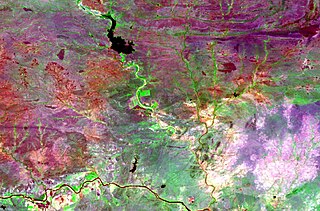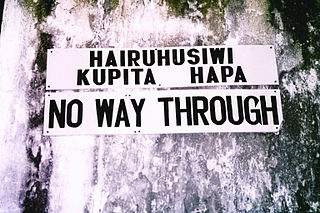The Tongwe are an ethnic and linguistic group based in Kigoma District and Uvinza District of Kigoma Region, on the eastern shore of Lake Tanganyika in western Tanzania. In 2000 the Tongwe population was estimated to number 31,551 .
The Tongwe are an ethnic and linguistic group based in Kigoma District and Uvinza District of Kigoma Region, on the eastern shore of Lake Tanganyika in western Tanzania. In 2000 the Tongwe population was estimated to number 31,551 .

The Communes of Burundi are divided into 2,639 collines. Colline means "hill" in French, one of the three official languages of the country. The collines are listed below, by commune:
Gokwe South District is one of the eight administrative districts of the Midlands Province of Zimbabwe. The district administrative seat is located in Gokwe Town also known as Gokwe Centre and the District Administrator is the focal person in terms of all district administrative matters. The district is divided into two administrative entities under the Ministry of Local Government, Public Works and National Housing, which are Gokwe South Rural District Council and Gokwe Town Council. The two district administrative entities were legally setup under the Urban Councils Act of 2015 [Chapter 29:15] and Rural District Councils Act [Chapter 29:13] under the constitution of Zimbabwe. The district is further subdivided into 01 senatorial constituency, 05 parliamentary constituencies and 33 council wards. These constituencies and wards are shared between these two administrative entities of Gokwe South District. According to the 2012 ZIMSTAT National Census Statistics the population of the district was at 330 036 people. Gokwe district is in the north-western part of Zimbabwe its average temperature vacillates at 40 degrees Celsius. Gokwe South District shares its boundaries with 06 districts, namely Binga Distirct, Nkayi District, Kwekwe District, Kadoma District, Lupane District and Gokwe North District.

The Mtetengwe River is a tributary of the Mzingwane River in Beitbridge District, Zimbabwe. There are two dams on its tributaries: Tongwe Dam on the Tongwe River, which provides water for an irrigation scheme, and Giraffe Dam which supplies water for cattle.

Sir George Stewart Symes, was a British Army officer and colonial governor.

Tanzania contains some 20 percent of the species of Africa's large mammal population, found across its reserves, conservation areas, marine parks, and 17 national parks, spread over an area of more than 42,000 square kilometres (16,000 sq mi) and forming approximately 38 percent of the country's territory. Wildlife resources of Tanzania are described as "without parallel in Africa" and "the prime game viewing country". Serengeti National Park, the country's second largest national park area at 14,763 square kilometres (5,700 sq mi), is located in northern Tanzania and is famous for its extensive migratory herds of wildebeests and zebra while also having the reputation as one of the great natural wonders of the world. The Ngorongoro Conservation Area, established in 1959, is a UNESCO World Heritage Site and inhabited by the Maasai people. Its Ngorongoro Crater is the largest intact caldera in the world.

Tanzania is a multilingual country. There are many languages spoken in the country, but no one language is spoken natively by a majority or a large plurality of the population. Swahili and English, the latter of which was inherited from colonial rule, are widely spoken as lingua francas. They serve as working languages in the country, with Swahili being the official national language. There are more speakers of Swahili than of English in Tanzania.
Tongwe (Sitongwe) and Bende (Sibende) constitute a clade of Bantu languages coded Zone F.10 in Guthrie's classification. According to Nurse & Philippson (2003), they form a valid node. Indeed, at 90% lexical similarity they may be dialects of a single language.

Katavi Region is one of Tanzania's 31 administrative regions. The region covers an area of 45,843 km2 (17,700 sq mi). The region is comparable in size to the combined land area of the nation state of Estonia. Kagera Region is bordered to the east by Tabora Region. The region is bordered to the south by Rukwa Region and Songwe Region. Lastly, Katavi borders DRC on Lake Tanganyika to the west. The region derives its name from Katavi, the spirit of lake Tanganyika. The regional capital city is Mpanda. According to the 2012 national census, the region had a population of 564,604.
The Kwekwe-Gokwe Highway or the R84-7 Highway is an all-weather bitumen macadam highway in Zimbabwe running from Kwekwe to Gokwe passing through Zhombe. As a trunk road it is officially designated as the P11 Highway.